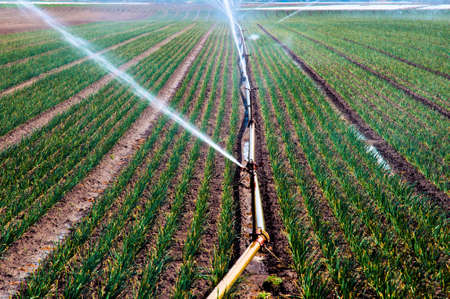Understanding Soil Quality in the Indian Context
India’s vast and varied landscape is home to an enchanting diversity of soils, each bearing its own story shaped by local climate, culture, and centuries of cultivation. From the fertile alluvial beds along the Ganges to the rich black cotton soils of Maharashtra and the laterite earths of Kerala’s lush gardens, Indian farmers must navigate a mosaic of regional soil characteristics. These variations create both opportunities and challenges for sustainable agriculture.
The Many Faces of Indian Soils
Indian soils reflect the country’s geographical tapestry. In northern plains, deep alluvial soils support bountiful rice and wheat harvests, while in the Deccan Plateau, black soils—locally called “Regur”—are prized for their moisture retention, ideal for cotton and pulses. Red soils, common in Tamil Nadu and Karnataka, challenge farmers with low fertility but reward careful stewardship.
Common Challenges for Indian Farmers
Despite this richness, Indian agriculture faces hurdles such as soil erosion, salinity, nutrient depletion, and water scarcity. Overuse of chemical fertilizers has sometimes led to declining soil health and reduced productivity. In rain-fed regions, erratic monsoons add another layer of uncertainty to maintaining soil quality.
The Wisdom of Tradition
Indian farmers have long relied on traditional knowledge—passed down through generations—to assess and nurture their land. Techniques such as observing earthworm populations, testing soil by touch and smell, or using natural amendments like farmyard manure are rooted in a deep connection with nature. Today, blending these time-tested practices with scientific methods offers a promising way forward for enhancing soil health and supporting resilient farming across India’s vibrant countryside.
Importance of Soil Testing and Analysis
In the ever-evolving agricultural landscape of India, understanding the health of your soil is like tuning into the heartbeat of your farm. Regular soil testing is not just a scientific recommendation, but a practical tool that empowers Indian farmers to make wise decisions tailored to their unique land and crop needs. By using locally accessible resources such as Krishi Vigyan Kendras (KVKs), state agriculture universities, or government soil health card schemes, even smallholder farmers can easily access soil testing facilities. This critical step helps in determining nutrient deficiencies, pH imbalances, and salinity issues that often go unnoticed until they affect yields.
Locally Accessible Soil Testing Resources
| Resource | Availability | Support Provided |
|---|---|---|
| Krishi Vigyan Kendras (KVKs) | All states | Sample collection, result interpretation, advisory services |
| State Agriculture Universities | Major cities & districts | Advanced analysis, research-based recommendations |
| Soil Health Card Scheme | Pan-India | Free/low-cost testing, printed soil health cards with advice |
| Panchayat-level Labs | Select villages | Basic testing, on-ground support |
Interpreting Soil Test Results for Indian Farms
The interpretation of soil test results is where science meets tradition. Indian soils vary widely—from the red loams of Karnataka to the alluvial plains of Punjab—so understanding what the numbers mean for your region is crucial. For instance:
- Nitrogen Deficiency: May require organic amendments like farmyard manure or urea application according to recommendation rates.
- High Salinity: Calls for salt-tolerant crops or gypsum application.
- Low pH (Acidic soils): Suggests lime application; common in eastern states.
- High pH (Alkaline soils): May benefit from sulphur application; frequent in arid regions.
From Data to Decision: Cultivating Wisdom in Indian Agriculture
A well-interpreted soil test guides every next step—be it the choice of fertilizer, planning crop rotation, adopting precision drip irrigation, or managing organic inputs. For example, knowing your soil’s water-holding capacity can help you adjust drip irrigation schedules, ensuring neither drop nor rupee goes to waste. Regular analysis also supports sustainable practices by minimizing overuse of chemicals and nurturing long-term fertility. In essence, routine soil testing transforms the ordinary farmer into a “soil steward,” cultivating not just crops but enduring prosperity for generations in the Indian heartland.

3. Choosing the Right Drip Irrigation System for Indian Crops
India’s agricultural landscape is a vibrant patchwork, where every state, from Punjab’s wheat fields to Tamil Nadu’s lush banana groves, tells a unique story of soil, water, and crop needs. Selecting the most suitable drip irrigation system is an art that weaves together the threads of local water availability, smallholder requirements, and economic practicality. To nurture our native soils and ensure each drop counts, farmers must consider both tradition and innovation when choosing their systems.
Understanding Local Water Realities
Water scarcity is a pressing concern across many Indian states. For regions like Maharashtra and Rajasthan, where rainfall can be capricious, low-pressure drip systems with inline emitters conserve every precious drop. Conversely, in the Ganges plains where groundwater is relatively abundant but unevenly distributed, modular systems allow for scalable expansion as farmers’ needs grow. Assessing borewell yield or canal access helps guide system selection and ensures sustainability over the seasons.
Tailoring Solutions to Major Indian Crops
Cotton in Gujarat thrives with subsurface drip lines that reduce weed growth and evaporation. Sugarcane growers in Uttar Pradesh benefit from twin lateral arrangements that feed thirsty root zones efficiently. For horticultural crops like grapes and pomegranates in Karnataka and Andhra Pradesh, pressure-compensated drippers deliver uniform moisture—essential for quality fruiting—even on undulating terrain. Matching emitter spacing and flow rates to crop root structures brings out nature’s best yields.
Empowering Smallholders with Cost-Effective Technologies
The heart of Indian farming beats strongest in its smallholdings. Affordable solutions such as gravity-fed bucket kits or solar-powered pumps have blossomed across villages from Assam to Madhya Pradesh. These innovations lower initial investment barriers while offering flexibility for intercropping patterns common in Indian polyculture gardens. Government subsidies and technical training programs further empower farmers to adopt drip technologies that harmonize with their landholding size and economic capacity.
Nurturing Soil Health Alongside Irrigation Choices
Drip irrigation is more than just hardware—it becomes part of a living ecosystem when paired with organic mulches or fertigation practices that respect India’s diverse soils. Whether tending red loams of Telangana or the black cotton soils of Vidarbha, integrating soil testing into system design ensures that nutrients reach roots efficiently and sustainably.
A Garden of Solutions for Every Indian Farm
No single drip irrigation system fits all; rather, there is a bouquet of options ready to bloom according to each farm’s unique needs. By blending local wisdom with modern technologies and keeping an eye on cost-effectiveness, Indian farmers can cultivate both prosperity and resilience—one carefully irrigated row at a time.
4. Integrating Drip Irrigation for Enhanced Soil Management
Adopting drip irrigation on Indian farms is like weaving a gentle river through your fields—each drop a promise to both the earth and the harvest. Properly integrated, drip systems not only conserve water but also nurture the soil, unlocking its potential for years to come. Below, we highlight best practices specifically tailored for Indian conditions, ensuring optimal water distribution, minimal runoff, and sustained fertility.
Best Practices in Drip Installation and Operation
- Site-Specific Design: Before installing, analyse field contours and soil types—sandy loams of Maharashtra or the black soils of Madhya Pradesh require different emitter spacing and flow rates.
- Uniform Water Distribution: Lay lateral pipes along crop rows, ensuring emitters are spaced according to root zone requirements. For crops like cotton or pomegranate, adjust spacing as per local recommendations.
- Filtration System: Use sand or screen filters to prevent clogging from hard water or sediment—a common issue across many Indian states.
- Pressure Regulation: Install pressure regulators to maintain even flow even when using gravity-fed systems in undulating terrains like Karnataka’s hilly fields.
Optimising Water Use & Reducing Runoff
| Practice | Description | Indian Context Example |
|---|---|---|
| Scheduled Irrigation | Irrigate during early morning or late evening to minimise evaporation losses. | Gujarat’s groundnut farmers schedule watering before sunrise during peak summer months. |
| Pulsed Irrigation | Apply water in short bursts rather than one long session, allowing soil absorption. | Maharashtra’s grape growers use this technique to reduce runoff on sloped vineyards. |
| Soil Moisture Monitoring | Install tensiometers or moisture sensors for real-time data-driven irrigation decisions. | Karnataka sugarcane farmers adopt sensors to avoid overwatering clay-rich soils. |
Sustaining Soil Fertility with Drip Systems
- Fertigation: Inject nutrients directly into the drip line, ensuring precise delivery to roots and reducing fertiliser wastage—a boon for cost-conscious smallholders.
- Avoiding Waterlogging: With controlled drip rates, risks of standing water and subsequent nutrient leaching are minimised, especially in heavy monsoon regions like Kerala.
- Cultural Integration: Encourage mulching with local organic materials (such as rice straw in Tamil Nadu) alongside drip lines to retain moisture and enrich the soil naturally.
The Indian Farmer’s Garden of Progress
Nurturing soil through mindful drip irrigation is more than a practice—it is an art rooted in tradition yet blooming with innovation. By embracing these best practices, Indian farmers can transform their fields into resilient gardens where every drop counts and every seedling thrives under attentive care.
5. Sustainable Practices: Fertigation & Local Innovations
Embracing sustainable agriculture is the heartbeat of India’s farming future. One vital method gaining popularity is fertigation, where fertilisers are delivered directly through drip irrigation systems. This approach not only saves water but also ensures that essential nutrients reach plant roots efficiently, minimising wastage and enhancing soil health.
Fertigation: A Smart Marriage of Water and Nutrients
By combining irrigation and fertiliser application, Indian farmers can tailor nutrient delivery to match crop growth stages. To start with fertigation:
- Select water-soluble fertilisers suitable for your crops—urea, DAP, and micronutrient blends are commonly used in India.
- Schedule applications based on crop requirements, usually more frequent but in smaller doses than traditional methods.
- Monitor water quality to avoid clogging drippers; regular flushing of lines helps maintain system efficiency.
Desi Wisdom: Local Success Stories
Across India, innovative farmers are transforming their fields with fertigation and homegrown solutions. In Maharashtra, sugarcane growers have reported up to 25% yield increases by integrating fertigation with drip. In Tamil Nadu, smallholder vegetable farmers use organic liquid manures like jeevamrutham in their drip lines, boosting both yield and soil microbial life.
Community Knowledge Sharing
Farmer collectives in Punjab have set up demonstration plots showing how balanced fertigation cuts down on chemical usage while maintaining bumper harvests. These grassroots innovations prove that blending modern technology with traditional wisdom can lead to healthier soils and better returns.
Whether you’re growing paddy or pomegranates, combining drip irrigation with smart fertigation practices—and learning from local champions—will help you nurture your land for generations to come.
6. Government Schemes and Farmer-Led Initiatives
India’s vibrant agricultural landscape is enriched by a tapestry of government schemes and grassroots initiatives designed to uplift soil quality and foster drip irrigation adoption among farmers. Recognising the critical need for sustainable water use and soil health, the Pradhan Mantri Krishi Sinchayee Yojana (PMKSY) stands as a flagship programme promoting micro-irrigation techniques, including drip systems. Through substantial subsidies—up to 55% for small and marginal farmers—PMKSY makes advanced irrigation technology accessible even in rural heartlands.
The Soil Health Card Scheme is another cornerstone initiative, providing millions of Indian farmers with detailed analyses of their land’s nutrient status. These cards empower cultivators from Punjab’s fields to Tamil Nadu’s gardens with actionable advice on fertiliser application, helping rejuvenate tired soils and nurture crops that flourish season after season.
Cooperative Efforts: Unity in Diversity
Beyond central schemes, India’s agricultural cooperatives and self-help groups act as catalysts for change at the community level. Organisations like NABARD (National Bank for Agriculture and Rural Development) support farmer producer organisations (FPOs) in adopting drip irrigation collectively, reducing costs through bulk procurement and sharing knowledge through local workshops or field demonstrations.
State-Level Innovations
States such as Maharashtra, Gujarat, and Karnataka have pioneered their own incentive programmes, tailoring support to regional crops and climate. For example, Gujarat’s Sujalam Sufalam Yojana integrates rainwater harvesting with micro-irrigation, while Maharashtra offers additional subsidies for horticultural farmers transitioning to drip systems.
The Power of Farmer-Led Movements
Across India, progressive farmers are embracing organic amendments, crop rotation, and precision watering as part of a new green revolution. Success stories—from Andhra Pradesh’s natural farming collectives to Rajasthan’s water-user associations—highlight how farmer-led innovation can complement government policy, creating a flourishing ecosystem where healthy soil and smart irrigation go hand-in-hand. Together, these efforts reflect the spirit of “Jai Kisan”—celebrating the farmer as both steward of tradition and champion of modernity.
7. Future Outlook: Building Resilience in Indian Agriculture
As the monsoon patterns shift and the climate presents new challenges, India stands at a crossroads where sustainable farming must become the norm rather than the exception. In this journey, soil stewardship and precision irrigation are not just agricultural techniques—they are essential strategies for building resilience in Indian agriculture.
The Role of Soil Stewardship
Indian farmers have long respected the soil as their most valuable asset. Today, scientific understanding and traditional wisdom combine to encourage practices such as organic amendments, regular soil testing, and integrated nutrient management. These approaches maintain soil fertility, support biodiversity, and buffer against unpredictable weather. By nurturing healthy soils, farmers can secure better yields and safeguard their livelihoods for generations to come.
Precision Irrigation for Water Security
With water scarcity affecting many regions across India, drip irrigation offers a lifeline. This method delivers water directly to plant roots with minimal wastage—a game-changer in states like Maharashtra and Rajasthan where every drop counts. Precision irrigation not only improves crop productivity but also helps conserve groundwater for future use, making it an indispensable tool in India’s agricultural toolkit.
Adapting to Climate Change
Climate change brings uncertainty, yet Indian farmers are adapting through innovation. Combining improved soil health with efficient water use enables crops to withstand droughts and floods alike. Government schemes supporting micro-irrigation and farmer-led initiatives in composting and mulching show how communities can work together to create climate-resilient farms.
Towards Food Security for All
Ultimately, strengthening the links between soil quality and water management is vital for food security in India. Healthy soils produce nutritious crops; smart irrigation ensures sustainability even when rainfall is erratic. By investing in these best practices today, India sows the seeds for a future where its fields remain abundant—feeding families, supporting rural economies, and nurturing the land for generations yet unborn.

